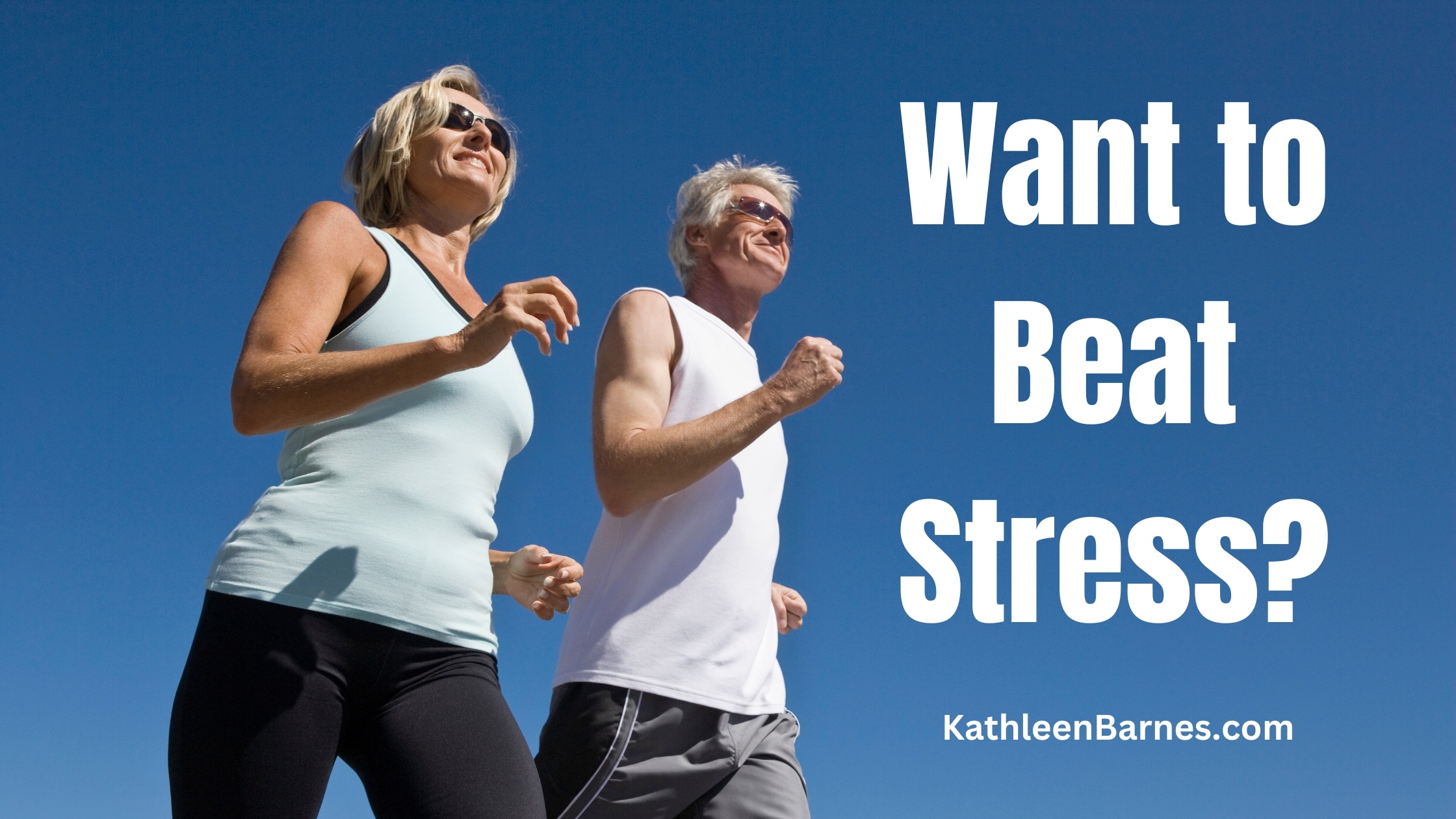I know. This time of year, everyone is all obsessed about exercise and trying the shed those holiday buffet pounds and all of my fellow writers are urging you to hit the gym.
and all of my fellow writers are urging you to hit the gym.
I look at exercise in a slightly different way: As a stress management tool. It is perhaps the most effective stress buster that I know and it doesn’t have to be a literal PITA.
Here’s an excerpt from my book, 10 Best Ways to Manage Stress:
Here’s the secret of exercise:
You’ve got to love it.
I mean you have to love what you’re doing, or quite simply, you won’t do it. That’s why so many people join gyms or buy treadmills and make these great New Year’s resolutions in January that are abandoned by March.
If you love tennis, by all means, play tennis, daily, if possible. If you are a loner who wants to walk in the woods alone, that’s your answer. Maybe it’s playing pickup volleyball on the beach or taking a Zumba class. Don’t try to swim against the river here. Your basic form of exercise must be something you truly enjoy.
Exercise can become an addiction and a very positive one for stress relief. Exercise causes your brain to release substances called endorphins, which are natural feel-good brain chemicals and pain relievers. Quite simply, that makes you want more.
Moving your body is one of the most powerful stress relievers known, according to the prestigious Mayo Clinic. Better yet, any type of movement will result in stress relief, so I prefer to call it movement therapy rather than exercise. It seems more digestible.
Movement will also help relieve depression and anxiety.
You don’t know what kind of exercise you love? Maybe you actually hate exercise. About one-third of Americans do no conscious exercise at all, to their detriment. I don’t think it is an accident that this is in the ballpark of the numbers who report they are chronically depressed. The two go very much hand in hand, but that’s a subject to be explored in depth in my depression book.
I can understand the resistance to exercise. Many people have that affliction. In fact, I can also understand how stress-producing it might be to hear me tell you that you need to add an hour of exercise a day to your already maxed-out stressful lifestyle. It’s not going to happen, is it?
How about we take it in little bites?
- Can you manage a 10-minute walk a day? Maybe on your lunch break?
- Can you walk up the stairs to your office or appointment?
- How about parking at the far end of the row when you shop?
You can actually get in a surprising amount of movement therapy in these small bites. In fact, researchers at Arizona State University found that three 10-minute walks a day reduced blood pressure more than one 30-minute walk.
So if three walks sounds too hard, try just one.
Walking
I’m not going to pretend to be able to tell you what is the best form of exercise for you. In fact, I choose to think of a lifetime of movement rather than so much conscious exercise.
Here’s what I do:
I’m a walking addict. Bear with me, even if this isn’t your passion. Walking is the easiest, most universal, cheapest way to get movement therapy. You can quite literally do it any time, any place. All you need is a comfortable pair of shoes. Period. You don’t need any memberships. You don’t need a buddy, although it is nice to have one sometimes. Generally, you don’t get sweaty and need to changes clothes and shower.
I do it rain or shine, 7 days a week because I love it. I’m lucky enough to live in the mountains and our neighborhood has lots of trails and friendly neighbors who don’t mind respectful walkers on their land. After my 100-pound weight-loss program, I decided walking would be my forever friend. I bought a pedometer, wear it every day and aim for 10,000 steps a day. I make it most days, and occasionally go way over, usually if I’m involved in a gardening binge and lose myself in the work, not even thinking about the “exercise” side of it.
Just as an aside, movement therapy or exercise doesn’t have to be what most people think. Gardening is a powerful form of exercise that involves all the muscle groups. What’s more, we tend to sustain it longer because we’re focused on the task at hand, weeding a bed, planting some new flowers or harvesting vegetables. Gardening is stress relieving in many ways, partly because you’re making a grounding connection with the Earth by putting your hands in the soil and clearing out unneeded clutter in the form of weeds. It’s not hard at all to burn 400 calories an hour while gardening. That’s more than jogging. Hey, even vacuuming and grocery shopping keep you moving. I like to stand up and work on my laptop from time to time, too. That’s the whole idea: Just move it!
I love my walking time. It’s a meditation for me, too, and being out in nature fills me with peace. That’s a huge stress reliever for me.
If I’m grappling with a question, dilemma, how to write something or how to address a difficult situation with someone, I can find answers when I “switch gears” and take a walk.
Yes, I admit it. I’m addicted.
Exercise improves coping skills
There’s also something about exercise that helps the body cope better with stress, according to the American Psychological Association. At least one study suggests that the brain chemical norepinephrine may also be enhanced by exercise, enabling the brain to deal more efficiently with stress. The same paper suggests that exercise gives the body a chance to practice dealing with stress, enabling better communication among the various body systems that are part of the stress response.
In a way, you’re actually exercising your body’s ability to respond to stress. There are some theories that say exercise actually increases your body’s ability to cope with long-term stress, the kind of stress I call toxic stress.
Exercise saves time
We’re all time-stressed and most of us think we haven’t got a spare moment even to add those few minutes of daily exercise.
The truth is you can’t afford not to take that time. Exercise actually is key to better focus and an ability to work in a more focused and productive way.
Exercise also helps erase the cobwebs and brain fog that frequently accompany stressful times. Think about it: You’re sitting at your desk with a dozen files open in front of you and a deadline looming. What to do? You are in a complete dither and you feel your blood pressure rising.
Stop. Take a few breaths. Push yourself back from your desk and go for a brisk 10-minute walk. That’s all it takes and you’re back at your desk, brain fog gone. That’s because you’ve simply increased the flow of oxygen and glucose (the brain’s food) through the bloodstream, reenergizing you exactly when you need it.
Mayo Clinic also suggests that exercise helps you get focused and erase background irritations and frustrations so you can concentrate on the task at hand, stressful or not.
In conclusion, exercise is your easiest, cheapest, most accessible stress reliever. There’s nothing more to it than to walk out your door. We all know how to do it and there are no special techniques. Unless you are severely disabled, you can most likely take a 10-minute walk here and there. Don’t worry about technique. Don’t worry about anything. Just go for it.
In addition, exercise improves sleep quality, and we all know that things tend to look different in the morning after a good night’s sleep.







